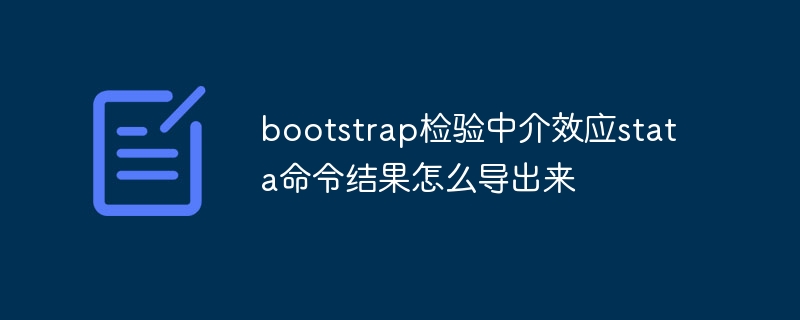
在 Stata 中导出 Bootstrap 中介效应检验的结果:保存结果:bootstrap post创建变量列表:local vars: coef se ci导出结果(CSV):export delimited results.csv, varlist(`vars') replace comma nolabel

如何导出 Bootstrap 检验中介效应的 Stata 命令结果
在 Stata 中使用 bootstrapping 技术检验中介效应时,您可能希望导出分析结果以进行进一步的展示或分析。以下步骤说明了如何导出 bootstrap 命令的结果:
1. 保存 bootstrap 结果
运行 bootstrap 命令后,可以通过以下方式保存结果:
bootstrap post
2. 创建要导出的变量列表
创建包含要导出的变量名称的变量列表。例如,如果您要导出系数估计值(coef)、标准误差(se)和置信区间(ci),则变量列表如下:
local vars: coef se ci
3. 导出结果
使用 export 命令将结果导出到外部文件。例如,要将结果导出到名为 results.csv 的逗号分隔值 (CSV) 文件中,请使用以下命令:
export delimited results.csv, varlist(`vars') replace
4. 指定输出选项
export delimited 命令提供了一些输出选项,例如:
示例代码
以下代码示例演示了如何保存 bootstrap 结果并导出系数估计值、标准误差和置信区间:
// 运行 bootstrapping 命令 bootstrap, reps(1000): mediate y x z // 保存结果 bootstrap post // 创建变量列表 local vars: coef se ci // 导出结果到 CSV 文件 export delimited results.csv, varlist(`vars') replace comma nolabel
导出后,您可以在外部程序中(例如 Microsoft Excel)打开 CSV 文件,并使用导出的结果进行进一步的分析或展示。
以上就是bootstrap检验中介效应stata命令结果怎么导出来的详细内容,更多请关注php中文网其它相关文章!

每个人都需要一台速度更快、更稳定的 PC。随着时间的推移,垃圾文件、旧注册表数据和不必要的后台进程会占用资源并降低性能。幸运的是,许多工具可以让 Windows 保持平稳运行。

Copyright 2014-2025 https://www.php.cn/ All Rights Reserved | php.cn | 湘ICP备2023035733号